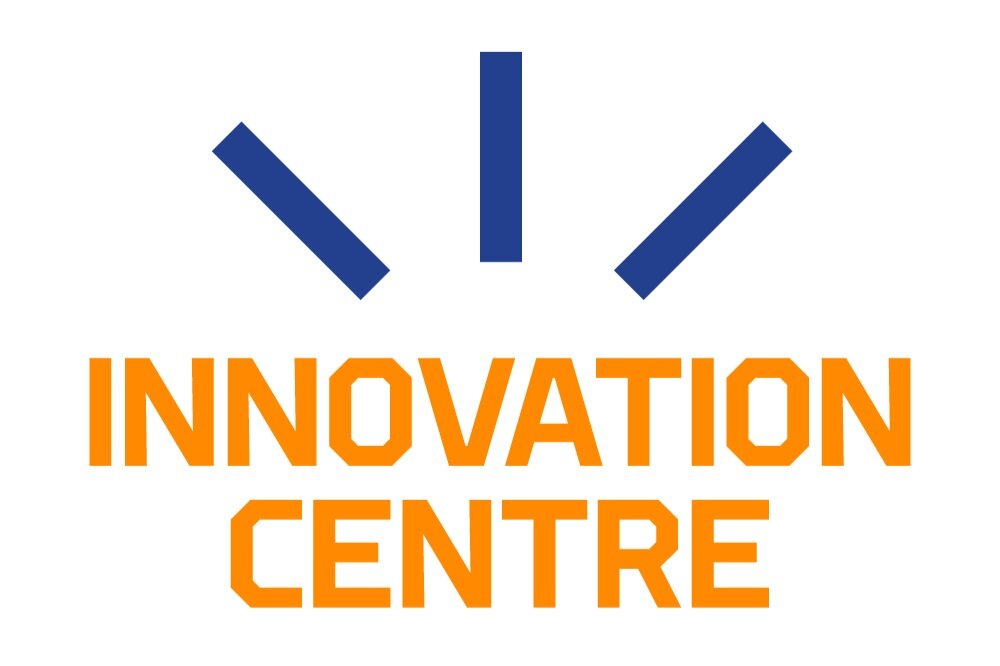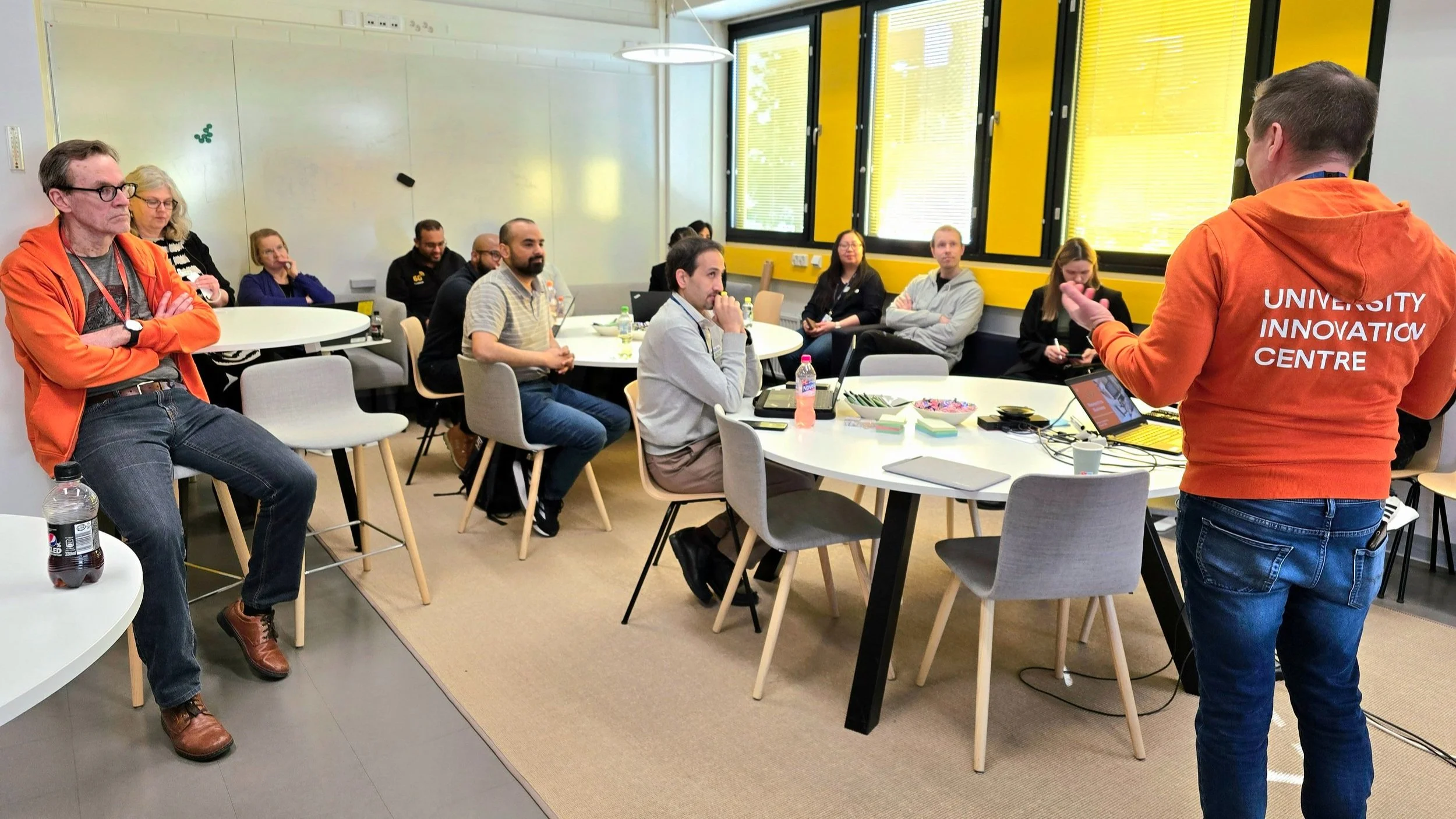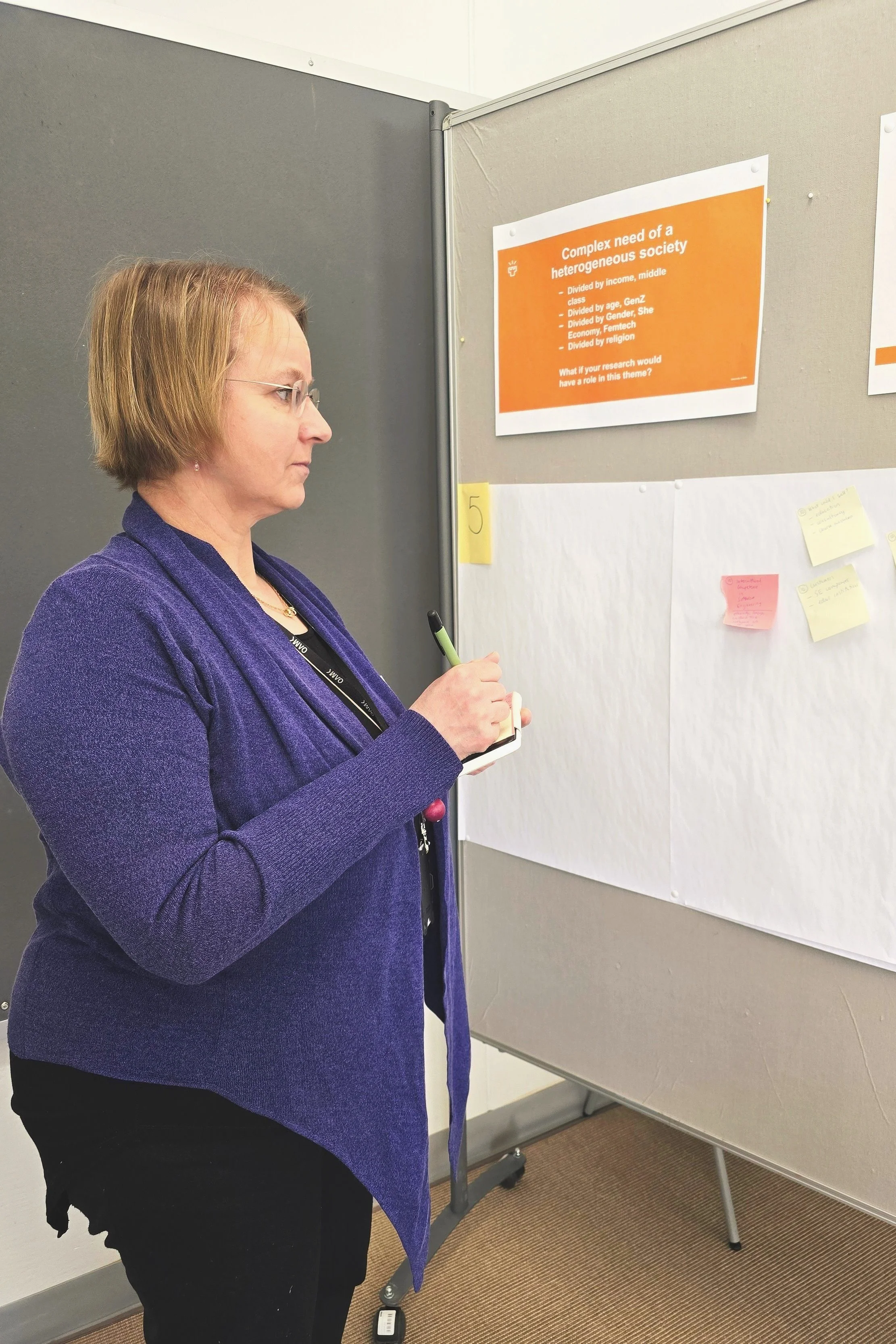From research to innovation — how do research results translate into practical solutions that change the world?
The Innovation Centre's UniOulu Science Day workshop challenged researchers to think about how research results can be turned into new inventions, services and practices.
Every year the University of Oulu produces dozens of new inventions that could be the start of future innovations. In 2023, 51 were reported. An example of a research-driven invention is the CyDisCo technology, developed by Professor Lloyd Ruddock and commercialised by the university. This technology extends the use of E. coli bacteria to the production of biological medicines.
How would you translate your research results into new inventions or services? This was the topic of the Innovation Centre's UniOulu Science Day workshop, Transforming research into innovation, attended by nearly 30 researchers.
The aim was to create a collaborative environment where researchers can think of innovative ways to transform their research results into new inventions, services and practices. "How can I use my research to address real-world challenges and create solutions that benefit society?" This was the question we wanted all participants to think about.
Inspiration from megatrends
We started the session by immersing ourselves in eight different megatrends. They are general and often global trends consisting of several phenomena. There are many different megatrends all around the internet, but for this workshop we decided to include these eight trends listed by Frost & Sullivan:
Transhumanism
Anything that moves will be autonomous
Connected living
Digital reality as frontier technology
Complex needs of a heterogeneous society
Intelligent assistants will drive business models
Concept of 'zero' world
Zero latency world
We discussed with the researchers what their research could add to these trends. After the first round of reflection, we took a step in a more concrete direction: we started to brainstorm what kind of product or service could be developed from the research, which market the solution would fit and who would be the customer of the solution. We also looked for links between the work and ideas of different researchers. As a result, we came up with some good concrete ideas and also some completely new thoughts. We were pleased to see that more researchers were interested in taking their ideas forward into practice.
From idea to practice with funding
So what are the funding options for taking your idea to a practical solution? In the workshop we presented different options:
PoC funding
Students and researchers at the University of Oulu can apply for Proof-of-Concept funding through the Innovation Centre, which aims at the first implementation of an invention or idea with commercial potential. PoC funding allows the inventor to focus on building the prototype, for example by purchasing the necessary materials or hiring help for the project. PoC funding is intended to enable the inventor to obtain, for example, Business Finland's Research to Business funding.
PoC funding can be used to demonstrate that an invention or idea works as intended. Ideally, the invention can be commercialised in the future as a new start-up or licensed to an existing company.
Research to Business funding
Research to Business funding is intended for public research organizations for projects in which research groups and researchers aim to develop their research into new business and to commercialize their research results.
Under this funding scheme, Business Finland can finance 70% of the total approved project costs, with the remaining 30% financed by the research organisation itself. Typically, Research to Business projects range in size from €300 000 to €700 000 and have a duration of 1-2 years.
When applying for Research to Business funding, it is important to have a strong background research, significant market potential, scalability and novelty of the idea, and a strong team with both research and business expertise. The Innovation Centre's experts can help to ensure that your project is ready to apply for R2B funding. We can also help you prepare your application.
Research to Business calls are organised twice a year, in spring and autumn.
Whether you apply for PoC or R2B funding, it is of course worth checking that no similar invention has been patented before you apply. The Innovation Centre can also help with this.
Researchers’ key takeaways from the workshop
Anu Niva
Research topic: cultural competence in software production
"My takeaway from the workshop is that if I apply for funding or want to sell my work in some way, I now have a better understanding of the bigger phenomena that are going on in the world. I got some good ideas on how my own research relates to megatrends. It helps when applying for research funding because I can tie my research to a current phenomenon."
Diana Temer
Field of research: synthetic chemistry, organic and inorganic chemistry
"During the workshop, I came up with a new idea that is not really related to my research topic, but I want to develop it further. I also have two other ideas related to my research. However, commercialisation needs much more time."
Amir Golroo
Research topic: digital twin in the road pavement
"I didn't have a clear idea of megatrends before, just a more general one. So, I gained new knowledge about megatrends and also about different financing options. I have a start-up idea and the workshop confirmed how I should take it forward!"
Take the plunge — the Innovation Centre is here to help!
The aim of commercialisation is to benefit the researcher, the University of Oulu and society. So it is definitely a direction worth considering for the researcher. Remember also that for example starting your own business does not mean that you have to give up your research career. You can still be a researcher after commercialisation — no one is forced to become an entrepreneur or a salesman after receiving funding, although these options are of course open.
The Innovation Centre is always on hand to help with issues such as idea development, entrepreneurship, IPR and networking. So if you need a helping hand, or want to know more about financing options, for example, contact our business development experts:
Janne Haverinen
janne.haverinen@oulu.fi
+358294488055
Markku Känsäkoski
markku.kansakoski@oulu.fi
+358294487506
UniOulu Science Day is the largest annual interdisciplinary event in our university community, aimed at promoting interdisciplinary interaction, knowledge sharing and new perspectives. The 2024 UniOulu Science Day on 17 April brought together over 300 staff members. We had the chance to learn from each other in 13 workshops on topics ranging from interdisciplinary teaching and research to using AI to write research funding proposals.









